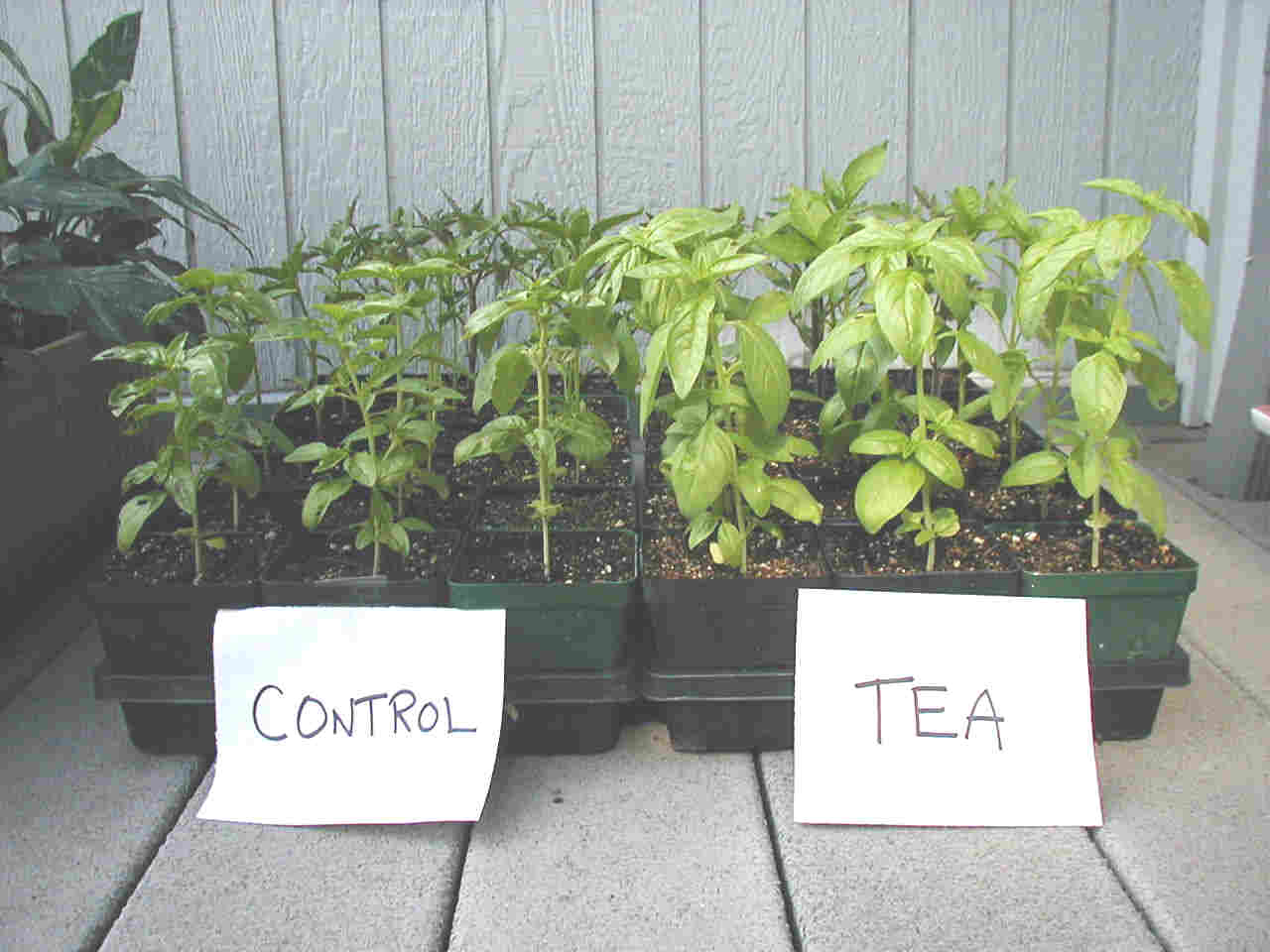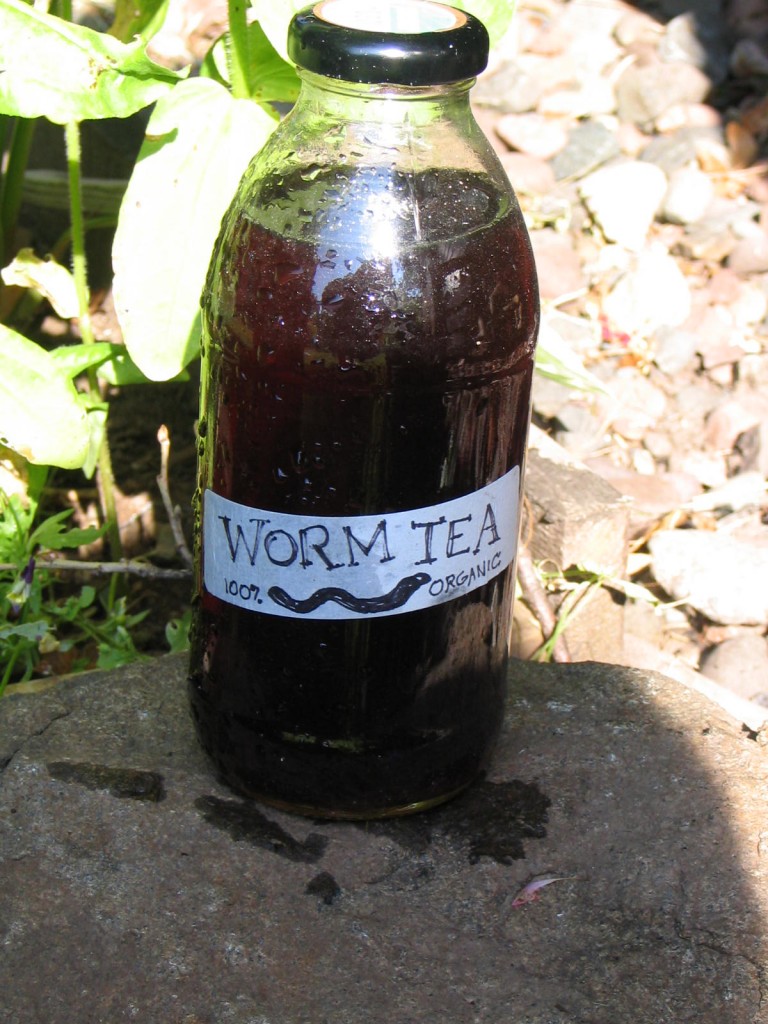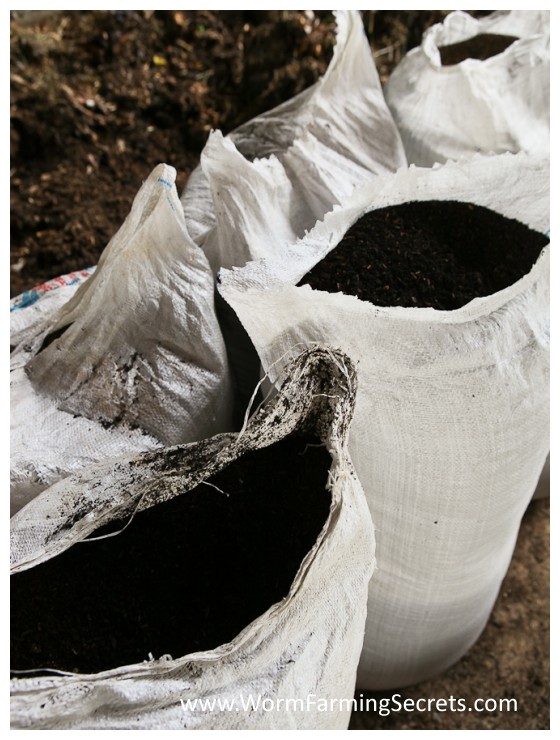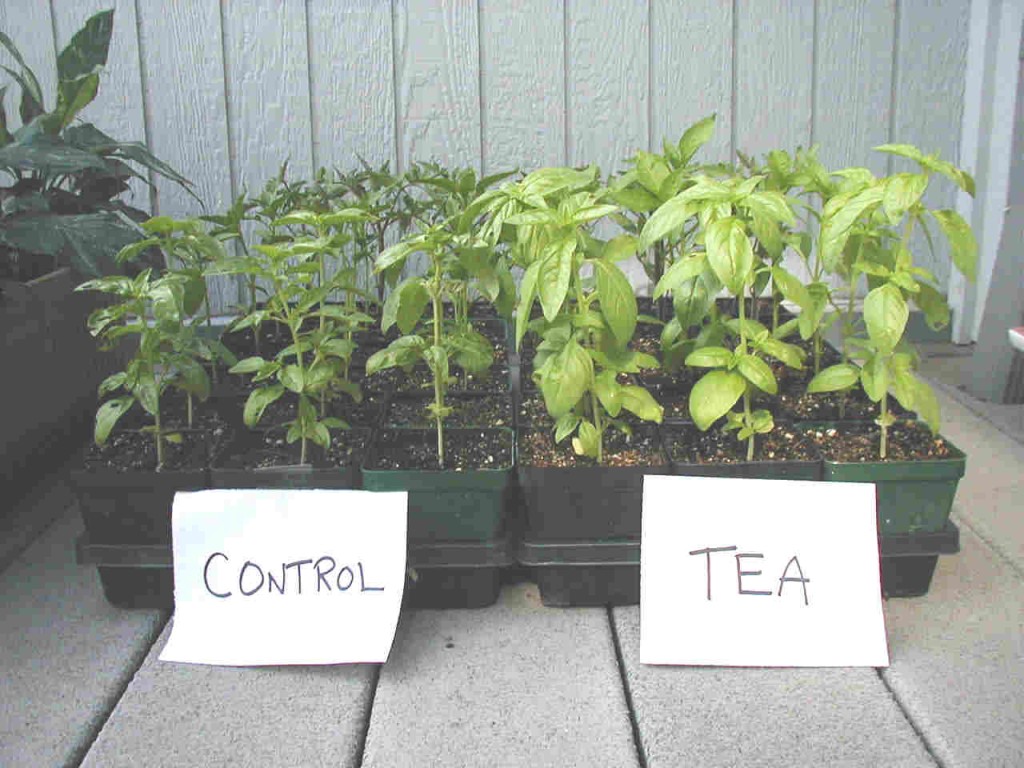It’s time to throw out that “Miracle Grow”…
If you’re serious about making your garden healthier and more organic, by reducing (or completely eliminating) the need for chemical pesticides and fertilizers, then here’s a secret “brew” that literally anyone can make at home to take their organic gardening to the next level.
It will help to dramatically improve the growth rate of plants.
It will help to reduce common plant pests and diseases.
It’s quick, easy and cheap to make.
But just a quick WARNING before you make this at home.
Once you make & start using this brew, once you see how healthy and productive your garden becomes, you’re NEVER going to look back. That’s how good this stuff it is.
And that means that ultimately you’ll want to setup your own worm composting operation, because this secret brew we’re talking about is “worm compost tea”. And, although you can buy “worm castings” from the local garden shop, there’s just nothing quite like fresh worm castings on hand whenever you need them.
You see the problem with most gardens is that chemical pesticides & fertilizers can be really harmful to the beneficial soil microbes in your garden. Ultimately this impacts the “natural ecosystem balance” that exists within a garden in a very unhealthy way.
For example, pesticides can actually eliminate certain types of beneficial soil microbes entirely, and once they’re gone, the bad microbes are then able to take their place expand and multiple.
And that generally means you need to keep adding more and more chemicals in order to get closer to the positive natural balance you’re looking for. But that’s not healthy.
The purpose of worm compost tea on the other hand is to directly improve the natural microbial life in your gardens soil, replenishing exactly what’s missing & strengthening what’s already there…
…and by improving the diversity of beneficial soil, stem, flower and leaf micro-organisms, it really helps to give new plants an amazing head start, and prevent the domination of those bad microbes without the need for any chemicals whatsoever.
It’s also amazing for established plants too.
Here’s a quick list of just some of the benefits of using worm compost tea on your garden…
- Pathogens cannot infect the plants because the potential infection sites are already dominated and occupied by beneficial microbes.
- Beneficial microbes have taken the available food & therefore pathogens have nothing to feed and grow on.
- Plants are more active, taking up nutrients from the tea and making them less susceptible to attack by pathogens.
- Nutrients and food in the tea encourages good microorganisms to grow.
- When applied to foliage, nutrients are retained on leaves and are released slowly, being available to feed the plant with time. This improves plants health and nutrition.
- Soil structure is improved, with more oxygen reaching into the roots and preventing toxin build up in soil by anaerobes.
- Water retention in soil is improved.
- Depth of root grow is increased. Stronger roots means stronger plants, with deeper access to nutrients and water.
- Decomposition of dead organic material and toxins are increased.
- Less exposure to chemical fertilizers and pesticides for the soil and the user, improving general health for both!
…that’s a pretty amazing list.
You would think something which has such tremendous benefits for your garden would be difficult to make at home right? Wrong, it’s really simple, and here’s all you’ll need…
What You’ll Need:
- Worm Castings
- Cheese Cloth / Nylon Paint Straining Bags or similar material.
- Large Bucket or Container
- Water (preferably rain water)
- Aquarium Pump & Air Stone For Aeration.
- Molasses (unsulphured)
…odds are you already have some of this stuff sitting around home.
If not you can literally get all of this equipment second hand for around $30 online, and heck, even brand new for under $100 – just remember that whatever path you go down it will last you a long time and serve you well into the future.
How Do We Make It?
In creating worm tea, it’s important to extract (and multiply) the beneficial microbes from the worm cast. Correct soluble nutrients will also need to be extracted or added for the correct growth of these microbes. The microbes will also need to be kept alive, and other than the correct food source, the brew will need to be kept oxygenated by an aerator pump…
I have a homemade tea brewing system consisting of either a 5 gallon bucket or a 35 gallon tank.
I use the system that is closest to the amount of tea I need at a particular time.
For example, in the winter when I’m germinating strawberry seeds, a 5 gallon batch is sufficient for applying to the plug trays each day. I apply it as a drench. In the spring, summer and fall when I have many plants outdoors in containers I brew a 35 gallon batch almost daily.
The equipment consists of the bucket or tank (depending on volume required).
I use nylon paint straining bags that are sold in hardware stores and big box stores. This is the “tea bag”. These come in 2 and 5 gallons sizes. Cheese cloth or a similar material can also work well, but nylon bags are just really convenient.
I use 2 oz. of fresh worm castings from our worm composting system per gallon of worm compost tea being brewed. It is put into the bag and tied close with a twist tie and dropped into the bucket / tank (which is filled with the appropriate amount of water depending on the size).
Brewing is done with an aquarium air pump.
I prefer the pumps that accept dual tubing. These are ¼” tubing found online or in many hardware stores in the irrigation aisle. I attach the tubing to the pump and to an air stone and drop into the tank / bucket. This increases the amount of oxygen in the brew helping the beneficial microbes to multiply.
To increase bacterial populations I use unsulphured molasses at a rate of 1 tsp / 5 gallons of water.
The molasses is mixed with warm water first to dissolve it and then added to the brew. Adding molasses gives the beneficial microbes “food” to help increase the rate and volume of them multiplying. Combined with the oxygenated water, they’ll multiply like crazy.
A standard brew is done for 12 hours which is really just an extraction of the nutrients and microorganisms; however you can brew for as long as 24 hours if you’re making larger quantities.
And in relation to that, if you wish to make larger quantities, simply scale up the necessary ingredients appropriately.
Pretty simple right?
Yip, it’s as easy as that. It will take 10 minutes to setup, and you can then just leave it brewing overnight ready for applying to your garden and plants the following morning…
So, How Do We Use It Exactly?
The worm compost tea can be applied in two ways, either directly into the soil around plants or as a foliar spray. There are benefits for both applications, and it depends on what the specific need for it is (but doing both regularly is recommended).
Foliage Application –
This is to apply beneficial microbes onto plants above ground, so that disease causing microbes cannot attack the potential infection sites, namely the leaf and stem. It can also provide nutrients as a foliar feed.
Dilution of the worm tea for this purpose is not necessary.
The concentration of microbes as a foliar feed is very important, as the aim is to cover the plant and leaf with as many beneficial microbes as possible, so the higher the concentration the better! If some parts of the leaf are uncovered, then it is only susceptible to attack.
When there are leafs with signs of disease attack, then the plant and immediate surrounding can be sprayed directly and drenched with worm tea. This can reduce the spread of the disease dramatically. It should be made sure that the whole leaf (especially the infected leaf) is covered, as the beneficial microbes will quickly consume all available food on the leaf surface, leaving no room for the pathogens to grow and spread.
Soil Application –
The soil needs a good set of beneficial microbes and the correct set of food for them to consume. The microbes help create soil structure, improving oxygenation and the retention of water. All this leads to a healthy plant root system, and an overall much healthier plant.
Application rates to soil are more relaxed and in general 1 liter to every 100mm tall seedling is a good guideline. Depending on how healthy your soil already is, it may only require 1 round of application, or a number of rounds of application at monthly or weekly intervals.
The effectiveness of tea in soil comes down to the organic material and texture of the soil.
The more sandy the soil, then the deeper the tea will soak into the ground, whereas the tea will stay more towards the surface in clay soils. Organic matter will contribute to the growth of the tea microbes when applied to the soil. So if there is not enough organic matter, adding some more will help prolong the benefits of the worm tea application.
Worm tea is great and easy to apply when vegetables and plants are already planted. However, it will be even more efficient to apply it onto soil before planting. The soil can be mixed and drenched with worm tea, adding a big boost of beneficial microbes. This will help strengthen your plants straight from the beginning, minimizing any potential problems and diseases in the future.
And there we have it. A really simple all natural organic brew that will help power your garden like nothing else.
If you’d like more information about this subject, be sure to check out Worm Farming Secrets. It’s hands down the most informative authority site on the topic of worm composting to help keep your gardening organic.




